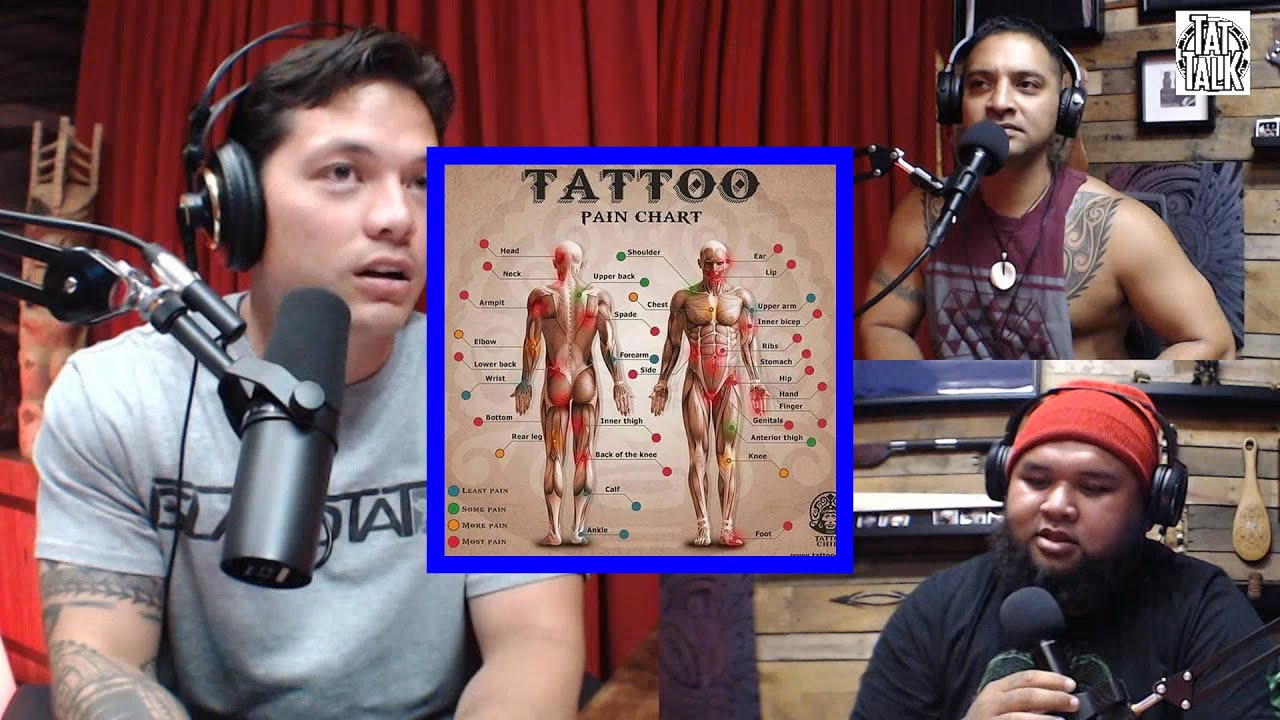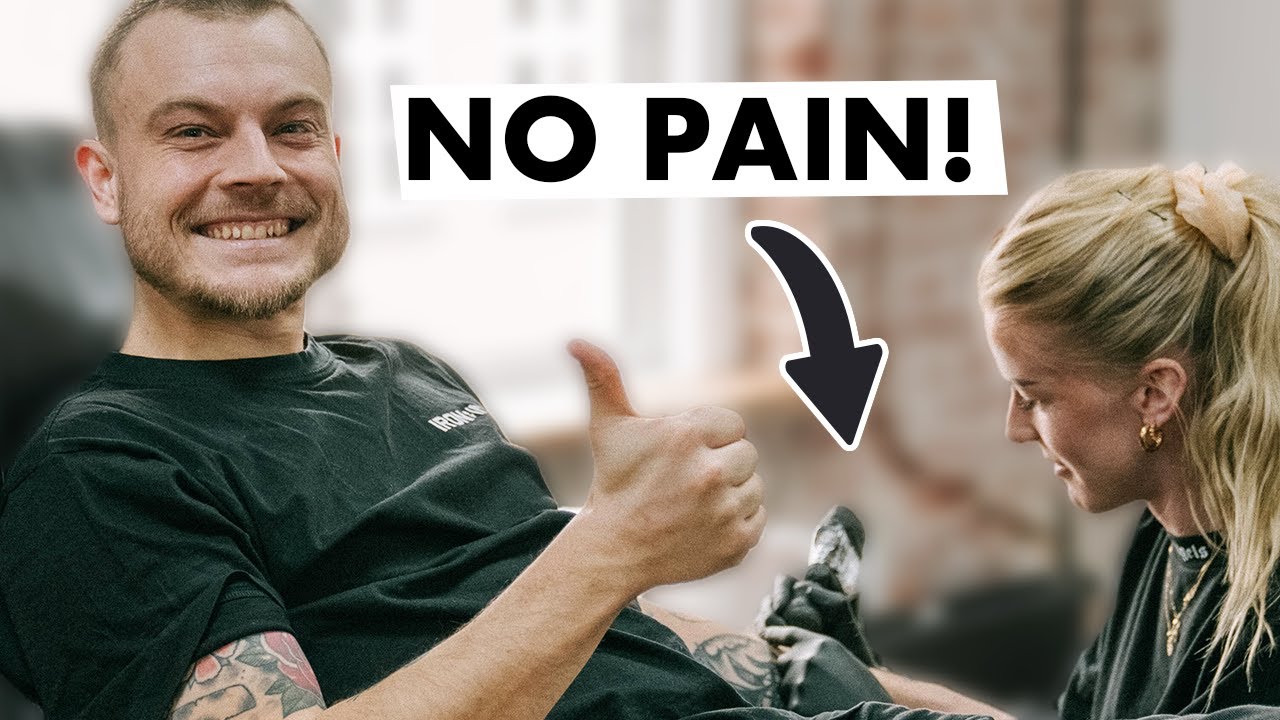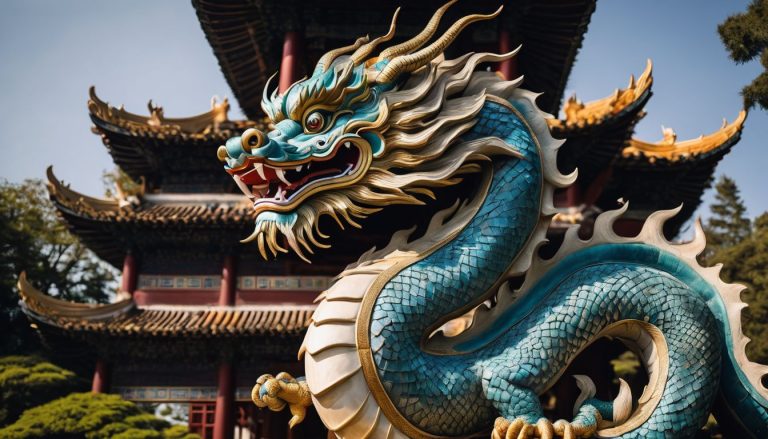The Ultimate Tattoo Pain Chart: Ranking Body Parts by Pain Level
Create your own unique tattoos and art for your home
Deciding on a tattoo often means planning for the sting of the needle. Tattoos can be quite painful, with the level of discomfort varying across different parts of the body. Our guide offers an ultimate pain chart to help you understand what to expect and how to manage it effectively.
Dive in and find out where your next piece will land on the pain scale!
Key Takeaways
- Tattoo pain varies greatly depending on body part, with areas like the armpits and rib cage being more painful due to higher nerve density.
- Individual factors such as previous pain experiences, stress levels, and overall health can influence how much a tattoo will hurt.
- Tattoos on fleshy parts of the body like the outer thigh or upper arm typically cause less pain because there are fewer nerves and more fat in those regions.
- Pain during tattoos isn’t just felt while getting inked; aftercare is crucial as soreness can occur in certain areas for a few days post-tattooing.
- Minimizing tattoo pain is possible by staying hydrated, using numbing creams, practicing relaxation techniques, and following thorough aftercare instructions.
Understanding Tattoo Pain
Factors such as skin thickness and proximity to bone can affect tattoo pain. Past experiences with pain and individual pain tolerance also play a role in how much discomfort one may feel during the tattooing process.
Types of tattoo pain, including burning, scratching, and stinging sensations, can vary based on the body part being tattooed.
Factors that affect pain
Several elements influence how much a tattoo will hurt. Your body’s anatomy plays a significant role; parts with more fat usually cause less discomfort than areas where bone is close to the skin, like ankles or ribs.
Skin thickness and nerve ending density also contribute to the pain level – thicker skin in places such as the outer arm typically leads to milder pain sensations during tattooing.
Pain sensitivity varies greatly from person to person, making each individual’s experience unique when getting inked. Factors such as gender can affect perception too, with different pain charts existing for males and females.
Additionally, stress levels and mental preparedness can either heighten or reduce how painful a tattoo feels. Tattoos on body parts like palms or armpits are notoriously intense due to the high concentration of nerves, confirming that placement matters immensely in the world of tattoo hurt.
How past experiences can impact pain tolerance
Factors that affect pain during tattooing can include past experiences, as individuals who have experienced trauma or discomfort in a particular area of the body may have lower pain tolerance when getting a tattoo on that same spot.
Additionally, psychological factors like anxiety and fear can intensify the perception of pain during the process. Furthermore, positive past experiences with tattoos can lead to higher pain tolerance as individuals become more familiar and comfortable with the sensation.
It’s important to consider these aspects when assessing potential pain levels for different body parts.
Understanding how past experiences influence an individual’s ability to tolerate pain is crucial in preparing for a tattoo session. By acknowledging the impact of prior traumas or favorable encounters with tattoos, it becomes possible to better manage expectations and provide adequate support throughout the process.
Types of tattoo pain (burning, scratching, stinging, etc.)
Understanding different types of tattoo pain is essential for preparing for your tattoo session. Here are the various sensations you may experience during the process:
- Burning: Some individuals describe a burning sensation during the tattooing process, particularly in areas with thinner skin.
- Scratching: The feeling of scratching or scraping might be felt when the needle goes over bony areas such as the wrist or ankle.
- Stinging: Stinging pain is common on sensitive body parts like the inner arm or rib cage.
- Aching: A dull, aching sensation can occur in areas with more muscle, such as the calf or upper arm.
- Throbbing: This pulsating pain often accompanies tattoos on body parts with more blood flow, like the neck or head.
- Prickling: A prickling sensation may be felt in areas with more nerve endings, like the hands or feet.
- Soreness: After your tattoo session, soreness may be experienced in specific areas for a few days; typically, this occurs in spots where bones are closer to the skin’s surface.
Ranking Body Parts by Pain Level
Discover which body parts are the most and least painful to get tattooed, as well as areas that fall in between on the pain scale. Understanding where different body parts rank in terms of pain level can help you prepare for your next tattoo session.
Most painful areas
The most painful areas to get a tattoo are those with more nerve endings and less fatty tissue, such as the armpits, rib cage, head, neck, shins, ankles, nipples, hips, and lips. These areas tend to feel more pain during tattooing due to the higher concentration of nerve endings. When tattooing these spots, individuals may experience heightened levels of discomfort compared to other parts of the body.
Moderately painful areas
Some areas of the body fall in between the most and least painful spots when it comes to getting a tattoo. Here are some moderately painful areas to consider:
- Inner arm: This area can be more sensitive due to its proximity to the armpit and the presence of nerves.
- Upper back: The skin is thinner in this area, which may result in a moderate level of discomfort during tattooing.
- Lower leg: The shin area can cause moderate pain due to the lower fat and muscle content compared to other parts of the leg.
- Upper chest: Closer proximity to bones and nerve endings in this area can lead to moderate pain levels during tattooing.
- Inner thigh: While less sensitive than other areas, the inner thigh may still cause moderate discomfort during the tattooing process.
Least painful areas
Transitioning from moderately painful areas to least painful areas, the following body parts are known to be the least painful places to get a tattoo:
- The outer thigh is one of the least painful spots due to its thick skin and fewer nerve endings, making it a more bearable area for tattooing.
- The upper arm’s back section is relatively less painful as it has more muscle and fat, reducing sensitivity to pain during the tattooing process.
- The stomach can be among the least painful tattoo spots as it has a fair amount of fat and limited nerve endings.
- An outer arm tattoo is generally less painful compared to inner arm tattoos, mainly because of its thicker skin and muscle structure.
- Parts of the back are considered less painful due to their relatively larger surface area, thicker skin, and presence of muscles beneath them, resulting in reduced pain sensations during tattooing.
Suggestions for Minimizing Tattoo Pain
Prepare for your tattoo session by staying hydrated, getting plenty of rest, and eating a good meal beforehand to help reduce pain – learn more about how to minimize discomfort during and after getting inked in the full blog post.
Preparing for your tattoo session
Prepare by ensuring you get a good night’s sleep and eat a meal before your appointment.
Mid-tattoo pain relief
After preparing for your tattoo session, mid-tattoo pain relief is crucial to ensure a more comfortable experience. Here are some effective ways to manage pain during your tattoo session:
- Stay Calm: Deep breathing and focusing on relaxation techniques can help minimize discomfort.
- Topical Numbing Creams: Applying numbing creams to the tattooed area can help reduce pain sensations.
- Distraction Techniques: Engage in conversation with your artist, listen to music, or focus on a specific point in the room to divert your attention from the sensation of the tattooing process.
- Take Short Breaks: If needed, ask your artist for short breaks during the session to give yourself a chance to rest and regroup before continuing.
- Stay Hydrated and Nourished: Ensuring you are well-hydrated and have eaten beforehand can help manage your body’s response to discomfort during the tattooing process.
- Communicate with Your Artist: Inform your tattoo artist if you’re experiencing excessive pain or discomfort so they can adjust their approach as needed.
- Mindfulness Practices: Utilize mindfulness exercises such as focusing on positive affirmations or visualizations to manage discomfort during the tattooing process.
Aftercare practices for reducing pain
To reduce pain after getting a tattoo, it is essential to adhere to the following aftercare practices:
- Keep the tattooed area clean and moisturized with a fragrance-free lotion to promote healing and minimize discomfort.
- Gently wash the tattoo with mild soap and water to prevent infection and reduce irritation during the healing process.
- Avoid picking or scratching the tattoo, as this can lead to increased pain, delayed healing, and potential damage to the design.
- Apply a thin layer of recommended ointment or cream provided by the tattoo artist to soothe any discomfort and protect the skin from dryness.
- Protect the tattoo from direct sunlight, chlorine, and excessive sweating to prevent pain caused by potential skin irritation or fading of the ink.
- Refrain from wearing tight clothing that could rub against the fresh tattoo and cause unnecessary pain or friction during the healing period.
- Follow any specific aftercare instructions given by your tattoo artist for your individual needs, as different areas of the body may require tailored care methods for optimal pain management and healing.
Pain management techniques for future tattoos
To minimize tattoo pain for future tattoos, consider incorporating the following techniques:
- Choose less sensitive areas of the body based on fat distribution and skin thickness to reduce pain during tattooing, such as the outer thigh or outer arm.
- Practice deep breathing and relaxation exercises to manage discomfort and anxiety during the tattooing process.
- Discuss with your tattoo artist about using numbing creams or topical anesthetics to minimize pain in more sensitive areas, like the ribs or armpits.
- Stay properly hydrated before your tattoo appointment to help maintain a higher pain tolerance level.
- Consider breaking up larger tattoos into smaller sessions to reduce overall pain and discomfort.
- Take over-the-counter pain relief medication recommended by a healthcare professional before getting a tattoo, if appropriate for you.
- Engage in regular physical exercise to build overall pain tolerance, which may help ease future tattoo experiences.
- Implement mindfulness practices to stay present and manage any discomfort during the tattooing process effectively.
Interesting Statistics and Facts about Tattoo Pain
Discover the areas with the most and least nerve endings, along with how body type, skin condition, and fear can affect tattoo pain. Gain insight into the fascinating factors that contribute to the varying levels of pain experienced during a tattoo session.
Areas with the most/least nerve endings
The least painful places to get tattooed are those with the most fat, fewest nerve endings, and thickest skin. These areas include the buttocks, thighs, and upper arms. Conversely, more sensitive spots such as the rib cage, head, neck, armpit, shins and ankles are among the most painful places to receive a tattoo due to higher concentrations of nerves in these regions.
Some individuals may experience varying levels of pain depending on gender or body type. For instance did you know that there are different tattoo pain charts available for both males and females? Since pain levels can differ based on gender.*.
How body type, skin condition, and fear can affect pain
Body type, skin condition, and fear all play significant roles in how a person experiences tattoo pain. Individuals with higher body fat may experience less pain due to the cushioning effect of fat on nerve endings.
Conversely, those with lower body fat might feel more pain during the tattooing process. Skin condition also influences pain levels – damaged or sensitive skin can enhance the sensation of pain while thicker skin may offer some protection against it.
Additionally, fear and anxiety can intensify the perception of pain, making the entire tattooing experience more uncomfortable for some individuals.
Resources for Aspiring Tattoo Artists
Explore the various avenues for preparing for a career in tattooing, including apprenticeships and recommended articles and programs for aspiring artists. Whether you’re just starting out or looking to further your skills, there are resources available to help you succeed in the industry.
Preparing for a tattooing career
To prepare for a tattooing career, aspiring artists should focus on honing their artistic skills and developing a strong portfolio that showcases their work. Additionally, seeking out reputable tattoo apprenticeships can provide valuable hands-on experience and mentorship to further develop their craft. It is important to research and connect with experienced artists to learn about the industry, different styles of tattooing, and best practices for running a successful tattoo business.
- Develop strong artistic skills by practicing various mediums and techniques to enhance creativity and precision in tattoo design.
- Build a diverse portfolio that demonstrates versatility in style, technique, and subject matter, showcasing the ability to execute different types of tattoos.
- Seek out reputable tattoo apprenticeships or mentorships to gain practical experience under the guidance of experienced professionals in a professional studio environment.
- Research the local regulations and requirements for obtaining a tattoo license or certification, ensuring compliance with health and safety standards.
- Network with established artists within the industry to gain insights into various tattoo styles, client interactions, and business management strategies for establishing a successful career.
- Stay updated on industry trends, advancements in equipment and techniques, as well as attending relevant workshops or seminars to continue learning and growing as an artist.
- Consider pursuing additional education or training in areas such as anatomy, color theory, or fine arts to deepen knowledge and understanding of the human body and art fundamentals.
- Embrace continuous self – improvement by soliciting constructive feedback on artwork from peers or mentors to identify areas for growth and refinement in technique.
Tattoo apprenticeships
Transitioning from preparing for a tattooing career, consider gaining hands-on experience through tattoo apprenticeships.
- Many aspiring tattoo artists choose to participate in apprenticeships to learn the craft directly from experienced professionals.
- During a tattoo apprenticeship, individuals receive hands – on training, guidance, and mentorship from seasoned tattoo artists.
- Apprenticeships offer the opportunity to develop technical skills, artistic techniques, and an understanding of hygiene and safety practices within a professional studio environment.
- Aspiring artists gain insight into client interactions, design consultations, and the business aspects of running a successful tattoo shop.
- Tattoo apprenticeships provide a supportive and immersive learning experience that can help individuals build their portfolio and establish themselves in the industry.
- Apprentices have the chance to observe different styles of tattooing and receive personalized feedback on their own work to refine their skills.
- This valuable experience can lead to future opportunities for employment or launching a successful career as a professional tattoo artist.
Recommended articles and programs for aspiring artists.
- Tattoo apprenticeships provide invaluable hands-on experience and mentorship for aspiring artists. Some programs offer structured curriculums with a focus on technique, safety, and artistic development.
- “The Tattoo Encyclopedia: A Guide to Choosing Your Tattoo” by Terisa Green is a comprehensive resource for aspiring artists, covering tattoo history, cultural significance, and design inspiration.
- The Art of Tattooing: A Complete Guide by Vince Hemingson is a practical guide that delves into the technical aspects of tattooing, from equipment and hygiene to creating custom designs.
- “The Business of Being a Tattoo Artist” by Andrés Hurtado offers insights into the business side of tattooing, including marketing, client management, and legal considerations.
- The National Tattoo Association provides online workshops and seminars covering various aspects of tattoo artistry, from color theory to advanced shading techniques.
- “Tattoo Artist Magazine” offers articles, tutorials, and interviews with renowned artists to inspire and educate aspiring tattooists about different styles and trends in the industry.
- Progressive Ink is an online platform providing courses on digital illustration, design fundamentals, and portfolio development tailored for budding tattoo artists looking to expand their artistic skills.
Conclusion
In conclusion, tattoo pain levels depend on various factors such as body type and skin condition. Pain varies from person to person and is not solely determined by gender. The most painful areas to get a tattoo include the ribs, head, neck, armpits, shins and ankles, nipples, hips, and lips.
Conversely, the least painful places are those with thick skin and few nerves. Ultimately, everyone experiences tattoo pain differently based on their unique pain tolerance and individual differences in nerve density across body parts.
FAQs
1. What is The Ultimate Tattoo Pain Chart?
The Ultimate Tattoo Pain Chart helps you understand how much different body parts might hurt when getting a tattoo, ranking them by pain level.
2. Which spots are the most painful to get a tattoo?
Most painful spots for tattoos usually include sensitive areas with thinner skin or closer to bone and nerves, like ribs, ankles, and wrists.
3. Is there a difference in tattoo pain between males and females?
Yes, there can be some differences in tattoo pain sensitivity between male vs female due to individual pain thresholds and body composition.
4. How can I reduce tattoo pain if it’s my first time?
To reduce first-time tattoo pain, stay hydrated, choose less sensitive spots according to the tattoo pain scale chart, and avoid caffeine before your appointment.
5. Are there ways to compare the pain of tattoos on different parts of the body?
Yes! You can look at a ranking of the various body parts on a tattoo pain comparison chart which uses a scale for identifying likely discomfort levels based on common experiences.










